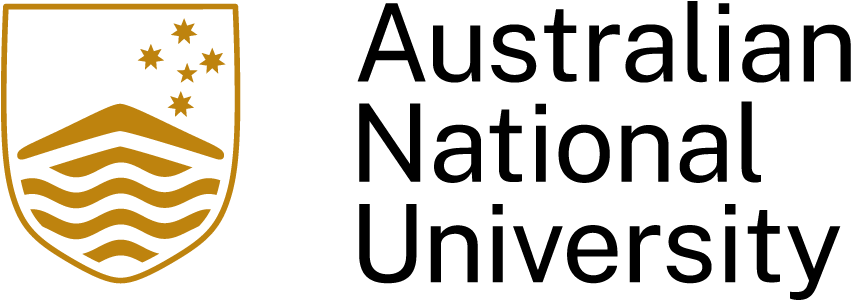
11 minute read
With more than two decades of global financial-market experience, ANU College of Business and Economics (CBE) alumna Dr Laura Ryan has gained extensive practical investment insights. Her strong academic credentials and achievements as an internationally published scholar further bolsters her depth of technical knowledge. She is currently the Head of Research at fixed income specialist Ardea Investment Management.
In this interview, Laura discusses how COVID-19 has redefined investor expectations, the evolution of statistical modelling and her unique experience at CBE, where she’s been an Honours student, a PhD candidate and a lecturer.
Q. Can you tell us about your career path? What drives your passion for statistics and investment management?
I guess I would describe my career path as non-linear (poor attempt at a stats joke!). After I finished my Honours degree with The Australian National University (ANU), I moved to Sydney and worked as a quantitative researcher in a few ‘buy’ and ‘sell’ side roles. Statistics is a very transferable skill set so it was relatively easy to transition between different parts of the finance industry. After a while, I decided I wanted to boost my quantitative skills and applied to do a PhD in statistics at ANU. It was the best decision I’ve ever made, so much so that I will be starting my second PhD in machine learning soon.
Whilst completing my PhD, I was also lecturing in statistics. They say that if you really want to learn something, then you should teach that something, and I agree. Teaching gave me a much deeper understanding and a greater appreciation of statistics. I’m now back in the industry applying my statistics knowledge to trade identification and portfolio construction. I get a great sense of satisfaction out of applying my statistics skills to real-life investment problems, whether it be trade analysis or helping clients with portfolio construction problems.
Q. How has COVID-19 redefined investors’ expectations of risks and alpha generation?
Significantly, especially with respect to the equity/bond correlation and the diversification benefits of bonds in general. With so much central bank intervention with respect to the yield curve, yield movements are not being driven by fundamentals. Furthermore, given the reluctance of central banks to move into negative interest rate territory, for now anyway, it’s very difficult to see how yields could fall much further. This means it’s also difficult to see how bonds could provide the diversifying return buffer we usually expect of them in the event that equities fall as they did over March 2020.
In terms of alpha generation, I think investors should look for strategies that are non-directional in nature – i.e. they give the investor exposure to idiosyncratic risk. The reason for this is that all asset classes have become increasingly sensitive to interest rate movements in the future. With Interest rates at historic lows and moving into negative territory, two things have happened: asset prices globally are continuing to be pushed higher because the discount rate has dropped and investors are reaching for higher yields and are investing in riskier assets, therefore pushing their prices up.
If rates rise, asset prices may become vulnerable. Even if you have no exposure to fixed income assets in your portfolio, rising rates still matter, a lot. It could be argued that rising rates are not a near term risk. Following on from the market turmoil resulting from the Global Health Crisis, central banks across the globe are committed to keeping short rates anchored for some time. However, the long end of the yield curve is not benefitting as much from central bank action and this has meant longer end yields have come under pressure.
I was very lucky to work with world-class statisticians and finance academics [at ANU]. The training I received meant that I could choose a career in academia or in industry.
Q. Please comment on the role of research in informing your delivery of client service in the current climate of market volatility across the globe.
Our clients expect more of us than just managing their money for them. We need to provide value in terms of independent research, advice and market insights. It’s especially important for us to provide research which is timely but also takes into account the changing market dynamics. We are in an environment where the ‘rules’ are being thrown out the window. For example, when I attended university it would have been considered a little silly to do research on yield curves which sat entirely under the zero line.
Q. How do you draw the best out of your team members to produce valuable research and thought leadership for clients?
I think it’s important we foster creativity and allow each other to utilise our comparative advantages. For example, a client may have an investment problem that they would like us to look at. The approach we take is to clearly define the goal or the deliverable, but then allow space for ideas about how to tackle the problem to evolve. It also helps to let our colleagues know when we think they’ve done a good job. Confidence begets confidence and confidence boosts productivity and creativity.
Furthermore, we make sure to ask our clients what matters to them. We try as much as possible to understand the issues they face and their investment problems. Our clients also have clients and the different demographics and goals of their clients leads to different investment objectives. To undertake bespoke research relevant to the client, it’s important for us to have a relationship that extends beyond a transaction.
Q. Over the past 20 years of your career, how has ’big data’ and the advent of new quantitative tools changed the nature of your work?
It’s opened up a world of opportunities and means that we need to keep up with the evolution of statistical modelling and machine learning techniques. To do this, we try as much as possible to keep close ties with academia so we can stay relevant and keep our skills up to date. One area that we are researching now is how non-linear relationships affect portfolio construction. Advances in statistical modelling and machine learning techniques are allowing us to potentially get more information out of our data than we previously could using simpler assumed linear relationships.
Q. In providing recommendations to clients, how do you weigh up the various tools at your disposal – i.e. fundamental analysis vs technical analysis?
It’s really important that theory comes into everything we do. Statistics is a tool to help us investigate theories and to help us discover new ones. However, we never blindly accept a relationship or adopt an investment strategy just because it did well in a back test or is doing well out of sample, aka the test set.
Q. How did your degrees at ANU prepare you for your career?
Whilst completing my PhD, I was very lucky to work with world-class statisticians and finance academics. The training I received meant that I could choose a career in academia or in industry. I think it’s really important to get an education that is academically rigorous, but also recognises that the majority of students will seek a career outside of a university.
The ANU College of Business and Economics offers an extensive range of specialised programs. Click here for more details.
